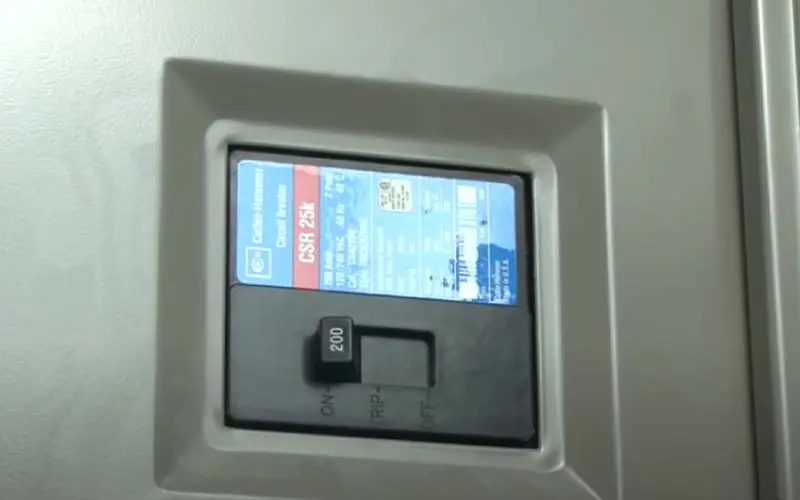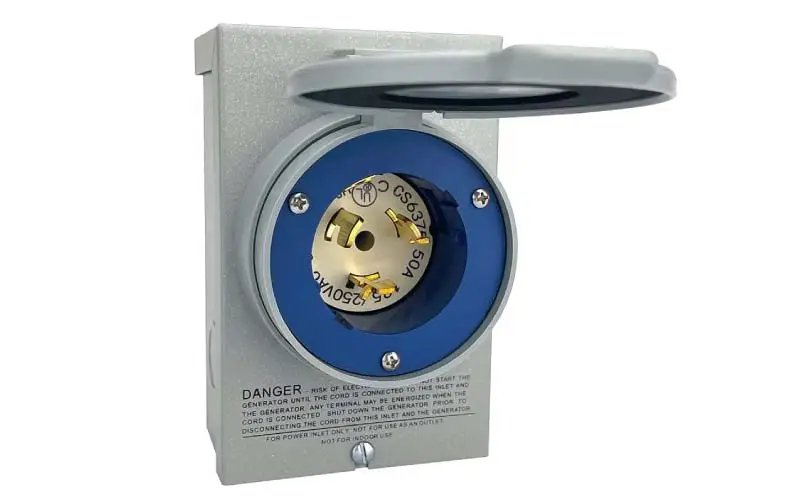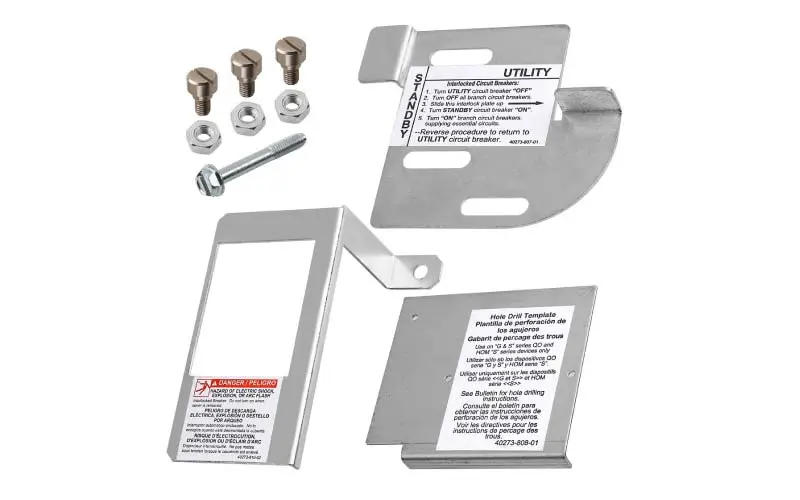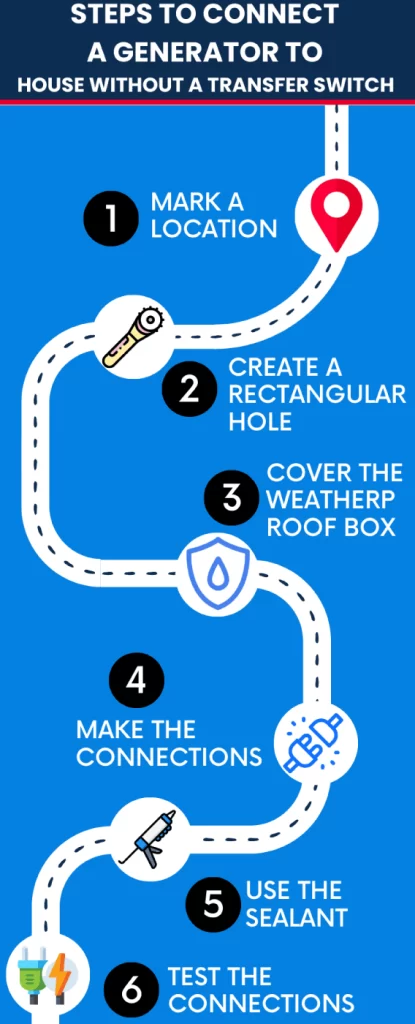How To Connect Generator To House Without Transfer Switch?
“Do you need to use a generator to power your home, but don’t want to spend $500 to $1000 on a transfer switch?”
It’s okay, it is possible to connect your generator to your home’s electrical panel without a transfer switch.
However, keep in mind that this is only a temporary solution and a transfer switch is a safest and most efficient way to connect a generator to your home.
In this article, I will guide you through the steps to safely connect your generator to your home’s electrical panel without a transfer switch.”
How To Connect Generator To House Without Transfer Switch Using Interlock Kit and Extension Cord
There are two ways to connect your transfer switch to the house.
- How to Connect a Generator to House with Interlock Kit?
- How to Connect a Generator to House with Extension Cord?
1. How to Connect a Generator to House with Interlock Kit?
Tools:
Step 1: Shut the Power Supply:

Cut off the main power supply to create an electrocution-proof environment. Main breakers are often labeled inside the breaker, but sometimes it is installed separately. If are unable to locate it, just TURN OFF all the breakers.
Step 2: Set a Location Near The Main Breaker Box:
Keep the drilled hole near the main panel, 3 to 4 feet should be good enough. Drill a hole as per the mark.
Step 3: Installation of Outside Weatherproof Plug:

Drill a hole and run a suitable 10 gauge or any other wire through the hole. Now install a weatherproof plug outside, and run the wire inside from the hole.
Step 4: Connecting a Compatible Breaker to The Generator’s Plug:
Once again, locate the main electrical panel and connects it to the generator’s weatherproof plug.
If the main electrical switch doesn’t have extra breakers, get a double pole breaker that is compatible with the generator’s amp rating.
Here is How You Can Do That:
- Firstly, remove the jacket of the 10 gauge wire, and connect the green ground wire to the grounding bar of the main electrical panel.
- Secondly, connect the neutral white wire to the neutral bar.
- Now for the red and black wires, insert the red wire in the left hole and the black wire in the right hole of the breaker, and tightened the screws.
- Finally, fix the breaker in the tabs of the main electrical panel.
WARNING: Don’t touch bare 3 grid wires to avoid electrocution even if you have turned OFF the breakers.
If are not tech savvy, don’t install the breakers and weatherproof plug because the process itself is a bit technical. To avoid any complications, seek out help from a professional technician.
Step 5: Installation of Interlock Kit:

An interlock works like a safety mechanism to prevent the overlapping of the grid and the generator’s power. Purchase the one that is compatible with your electrical panel, and check if it is allowed in your country to fulfill fire safety guidelines.
Here Is How You Can Install the Interlock Kit:
- Remove the door of the main electrical panel and flip it upside down.
- Drill four holes on the back where you want to install the interlock kit.
- Tight the interlock kit with screws and fix the door.
2. How to Connect a Generator to a House with Extension Cord?
You Will Need the Following Tools and Materials

Step 1: Mark a Location for the Utility Box:
Mark a location inside the house if possible. However, if your generator is placed outside or in the garage, make place 5 to 6ft. away from the generator.
Step 2: Create a Rectangular Hole:
Make a rectangular hole as desired using a rotary/oscillatory tool even if the wall is built of wood. Install the drywall box.
After that, drill a hole in the middle of a drywall box with a drill. This hole will help you to transfer the power cable outside.
Step 3: Cover the Weatherproof Box:
Locate the hole you just drilled and passed the power cable from and the weatherproof box on it using tapcons.
Step 4: Make the Connections:
Prepare the receptacles before installing the wires. Insert the wires of the receptacle into the box from the inside. You can also join a make extension cord to the receptacle wire if you want to protect it from weather abuse.
Step 5: Use the Sealant:
Now use the silicon sealant to seal the extra space of the hole from both sides.
Step 6: Test the Connections:
Start the generator and connect the female cord of the generator to the male cord of the receptacle. Give it a load of 1000 watts and check if the connections are working fine.
What are the Limitations of the Extension Cord Connections?
- Extension cords have limited outlets.
- Wires and extensions create a mess.
- Tripping and falling hazard is involved in the extension cord connection.
- Power feeding back to grid or appliances failure hazard.
- You can’t draw a full load from the generator using an extension.
- Extension cord connection is unsuitable for heavy-duty generators (12kw to 15kw).
Safety Measures for Connecting a Transfer Switch to a Generator
Do I Need A Generator Transfer Switch?
In the end, it depends on the requirement, but the following are some of the situations in which you should opt for a transfer switch.
- To get the safest possible option.
- If you want to purchase a heavy-duty generator (8kW to 12KW)
- If you don’t prefer the mess created by the wires and extensions
- Money isn’t the problem.
- If you need an automatic solution.
- If a transfer switch is mandatory in your state.
Transfer Switch vs Interlock Kit – Which One is Better?
An interlock kit allows the power to run from the generator to any circuit within the electrical panel while a transfer is limited to a specific number of circuits.
As far as safety is concerned, a manual or an automatic transfer switch is the safest way if money is not an issue for the user because they cost a bit more compared to an interlock kit.
What are The Legal Ways to Connect Generators to a House?
The generator can be connected to a house in the following ways:
- Using a transfer switch
- Using an extension cord
- Through an interlock kit
- Through Generlink
Frequently Asked Questions (FAQs)
Can I use a Portable Generator without a Transfer Switch?
There are two ways you can connect a generator with your without using a transfer switch. Using an interlock kit, or an extension cord.
An interlock kit allows the power to run from the generator to any circuit within the electrical panel while a transfer is limited to a specific number of circuits.
Can I Plug a Generator into an Outlet?
Generators cannot be plugged into the wall socket. That is not illegal, but extremely dangerous. You may end up damaging the overall appliances of your house, it can burn the outlets and backfeed the power, which is not ideal at all.

Kashif has been a valuable asset to the electric generator industry for over 5 years. Now, As a skilled energy engineer, he’s been on the front lines of diagnosing problems, fixing broken parts, and performing routine maintenance tasks to keep generators running smoothly.
